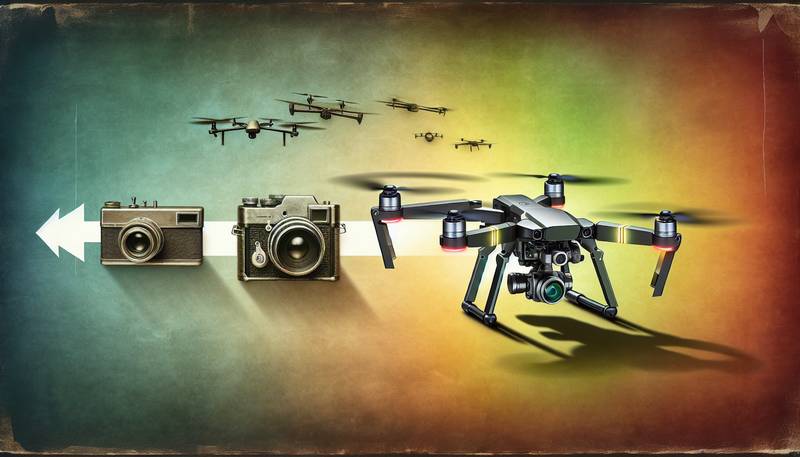The Evolution of Drones: From Military Gear to Everyday Tech

The Early Days of Military Drones
The history of drones can be traced back to the early 20th century when they were first used by the military for target practice. These early drones were essentially remote-controlled aircraft that were used to simulate enemy planes for training purposes. As technology advanced, drones became more sophisticated and were equipped with cameras and other sensors to carry out surveillance and reconnaissance missions.
The use of drones in warfare became more prominent during the Vietnam War when the US military used them to gather intelligence on enemy positions. However, it wasn't until the 21st century that drones truly came of age. The development of advanced sensors, GPS, and wireless communication technology allowed drones to carry out a wide range of tasks, from bombing enemy targets to providing real-time surveillance.
The Rise of Consumer Drones
While drones were getting more advanced in the military, they were also becoming more accessible to the general public. In the early 2000s, companies like DJI and Parrot began producing consumer-grade drones that were affordable and easy to fly. These drones were equipped with cameras and could be controlled with a smartphone, making them a popular choice for photography enthusiasts and hobbyists.
As consumer drones became more popular, they started to be used for a wide range of applications beyond just photography. Drones have been used for everything from delivering packages to monitoring crops to assisting in search and rescue operations. The versatility and ease of use of consumer drones have made them a valuable tool for both individuals and businesses.
The Advancements in Drone Technology
The past few years have seen significant advancements in drone technology. Today's drones are equipped with features like obstacle avoidance, automatic return-to-home, and intelligent flight modes, making them easier and safer to fly than ever before. Additionally, drones are now capable of carrying heavier payloads, which has opened the door to new uses like aerial delivery and carrying medical supplies.
Drones are also getting smarter. With the integration of artificial intelligence and machine learning, drones can now identify objects, track moving targets, and even make autonomous decisions. This has led to the development of drones that can be used for security and surveillance, agriculture, and environmental monitoring.
The Challenges and Controversies of Drones
Despite their many benefits, drones have also raised concerns about privacy, safety, and security. The widespread use of drones has led to fears about them being used for surveillance without consent and the potential for accidents or collisions with other aircraft. There have also been instances of drones being used for illegal activities like smuggling or surveillance.
To address these concerns, governments around the world have implemented regulations governing the use of drones. These regulations vary from country to country but often include requirements for drone registration, training and certification for pilots, and restrictions on where drones can be flown.
The Future of Drones
As technology continues to advance, we can expect drones to become even more capable and versatile. One area of development is in autonomous drones that can fly without human intervention. These drones could be used for a wide range of applications, from package delivery to disaster response.
Another area of development is in drone swarms, where multiple drones work together to carry out complex tasks. This could be used for everything from agriculture to search and rescue operations.
Overall, the evolution of drones from military gear to everyday tech has been a remarkable journey. Drones have come a long way since their early days as remote-controlled aircraft, and their potential is only just beginning to be realized. Whether for work or play, it's clear that drones are here to stay and will continue to be a vital part of our lives in the years to come.


